Motorola Razr Plus 2024 hands-on: So much room for activities
You basically don't even need the main display on the Razr Plus 2024.
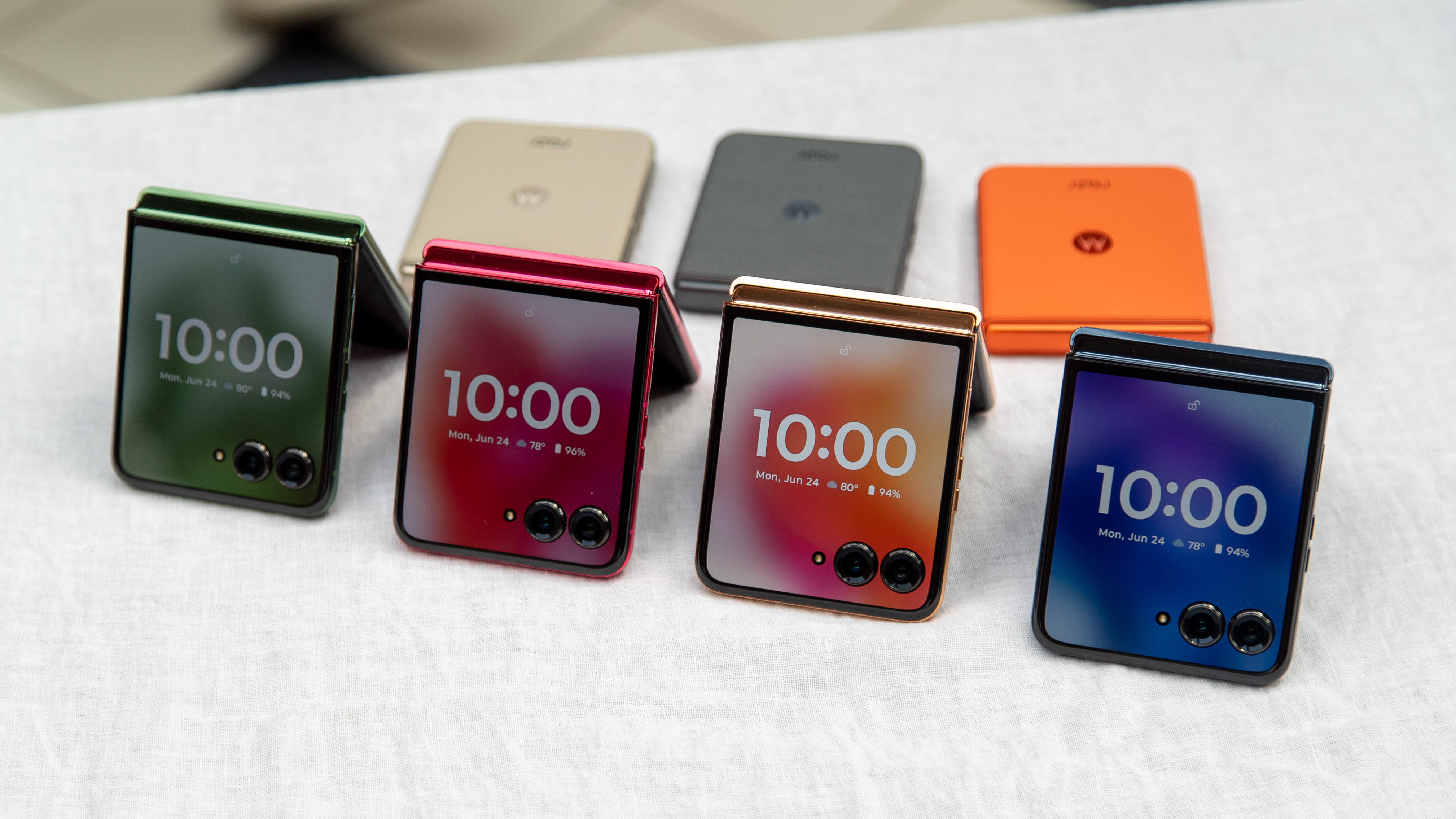
After impressing us with a major comeback for the Razr family, Motorola is following up with a refresh for this year with the Razr Plus 2024 and Razr 2024. Both phones bring bigger and better cover screens, improved cameras, and even a taste of some of the latest AI features, and I got to spend some time with them while in New York City for the launch of the Razr 2024 family.
To say that I'm excited about these phones is an understatement. The Razr Plus 2024, in particular, is a phone that seems to check all the boxes in terms of what I wanted fixed on the previous model, and I just hope that my time with the phone proves me right. But for now, here are my first impressions of the Razr Plus 2024 and its cheaper sibling.
Motorola Razr Plus 2024: If it ain't broke... fix what you can
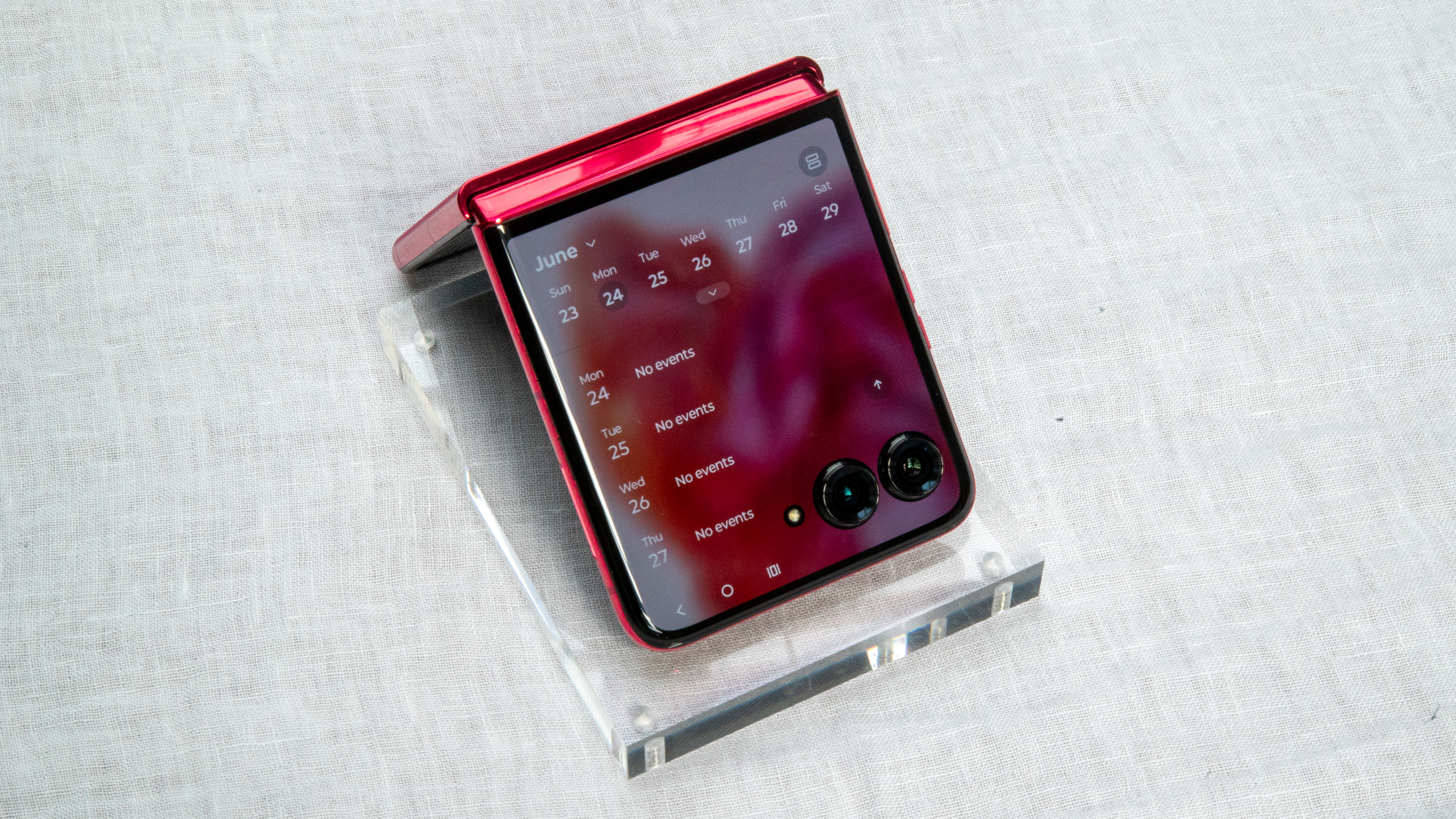
Motorola didn't make many drastic design changes for 2024. Looking at the Razr Plus 2024 with the screen off, the phone looks nearly identical to its predecessor, save for the sexy new colors that this phone is launching in (more on that later). The phone still struts its curvy frame around like it has something to prove, with the front and back panels rounded off to seamlessly blend into the frame.
The biggest difference at first glance is the cameras, which now protrude much more from the bottom corner of the cover screen, likely to fit the new sensors. And speaking of the cover screen, that is probably the biggest design change on this phone, measuring at a massive 4 inches and making it one of the biggest on a flip phone (matching the Honor Magic V Flip, which only just beat it to the punch). I'll also get to that later, but Motorola has refined the overall design of the Razr Plus 2024 while changing only what needed to be changed.
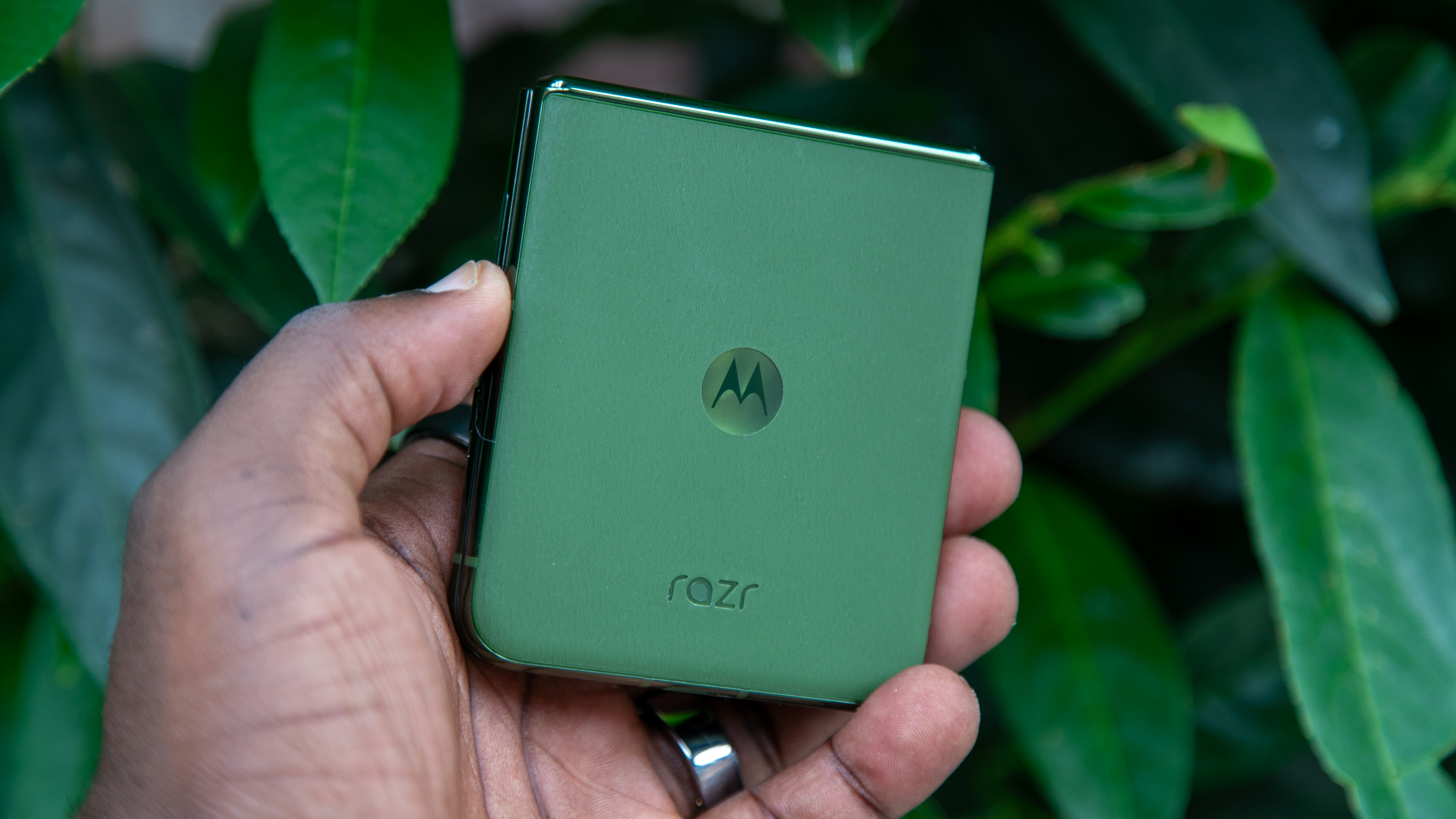
In hand, the phone feels great and a tad heavier than the Motorola Razr Plus 2023. That may be due to the larger battery inside, which now supports faster wired and wireless charging. One improvement I love to see is with the hinge, which appears to be smaller than its predecessor. That doesn't seem to be to the phone's detriment, as it now feels much sturdier than before, able to hold its place at various angles without the worrying wobble that plagues the last Razr Plus.
Of course, we'll have to see how the hinge fares over time, but for now, I'd say this is a very good start.
When opened, the 6.9-inch OLED display is brighter and seemingly more vibrant than its predecessor. At 165Hz, the display is just as fluid as its predecessor, which is great, especially if you're a gamer. Motorola also adjusted the built-in screen protector so that it covers more of the display, such as the internal selfie camera.
Be an expert in 5 minutes
Get the latest news from Android Central, your trusted companion in the world of Android
The phone is also powered by the Snapdragon 8s Gen 3, which Motorola says provides the perfect balance of AI features and performance, although I figure it was likely a cost-related move too. On the plus side, we're now getting 12GB of RAM, which should be sufficient enough to handle plenty of apps and AI features.
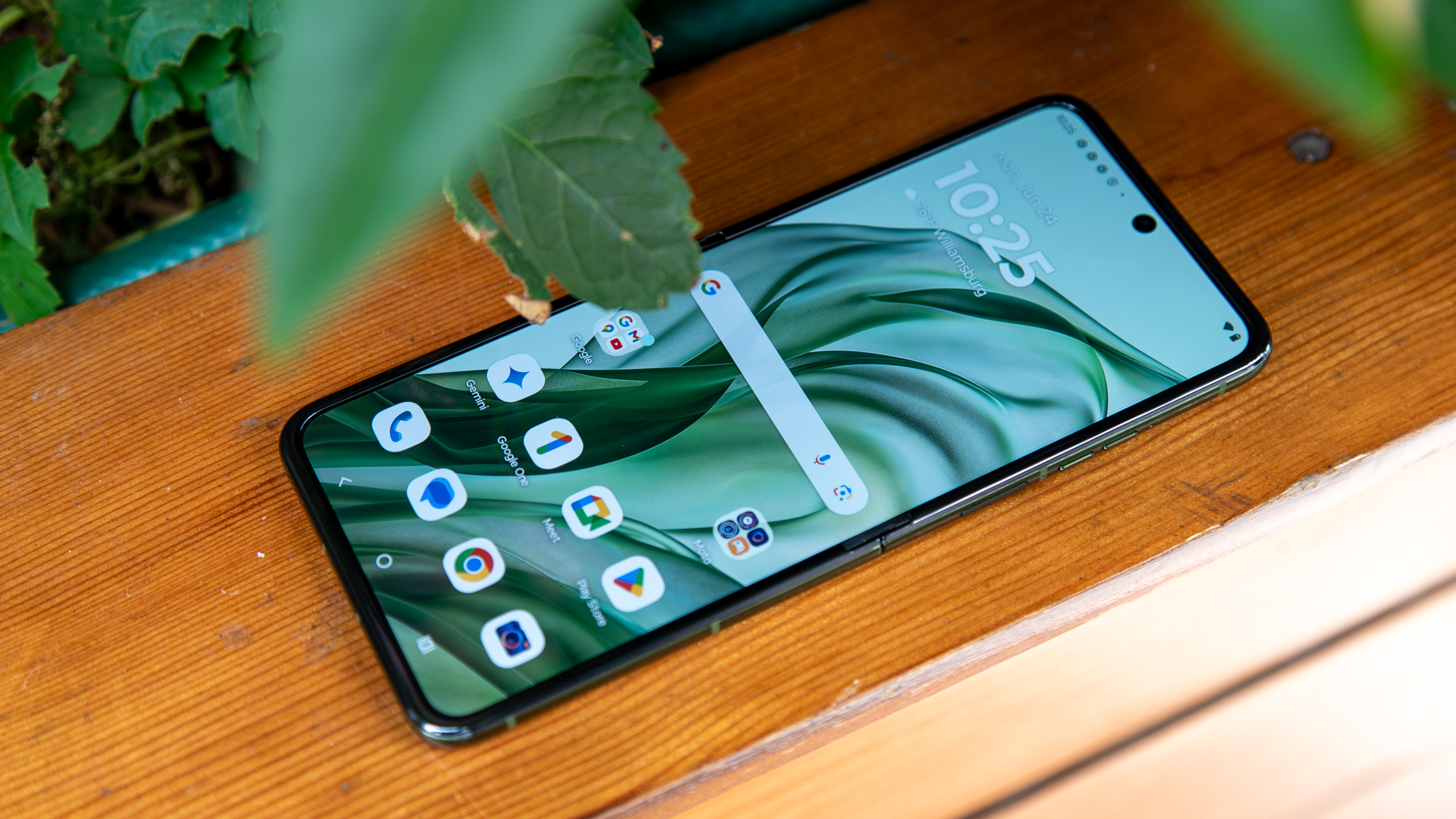
No 2024 Razr model has glass on the back, which has been Motorola's thing for 2024 with phones like the Moto G Stylus 5G 2024 and Edge 2024. Interestingly, while all the phones have vegan leather on the back, the texture and feel are different with each color. The Spring Green feels a bit like the Motorola Razr 2023, which had a softer feel than the Razr Plus 2023, and the texture feels almost like grass, which is fitting. The Hot Pink (a nice throwback) feels nothing like the Viva Magenta from last year, almost giving a suede texture. The Midnight Blue color option has two different textures, with two leather-like strips on either side of a middle suede-like strip.
I also like that Motorola has seemingly moved away from the standard black or white color options, so no matter which Razr Plus you buy, it'll be some unique color that will likely turn some heads.
Last but not least, the Motorola Razr Plus 2024 comes with IPX8 water resistance, meaning you can submerge this phone without worrying. As a result, it seemingly loses the dust resistance rating, but Motorola says the phone should be inherently dust-protected at this level of water resistance. The hinge is also better protected against dust, so it sounds like we really shouldn't worry.
Motorola Razr Plus 2024: All cover screen, all the time
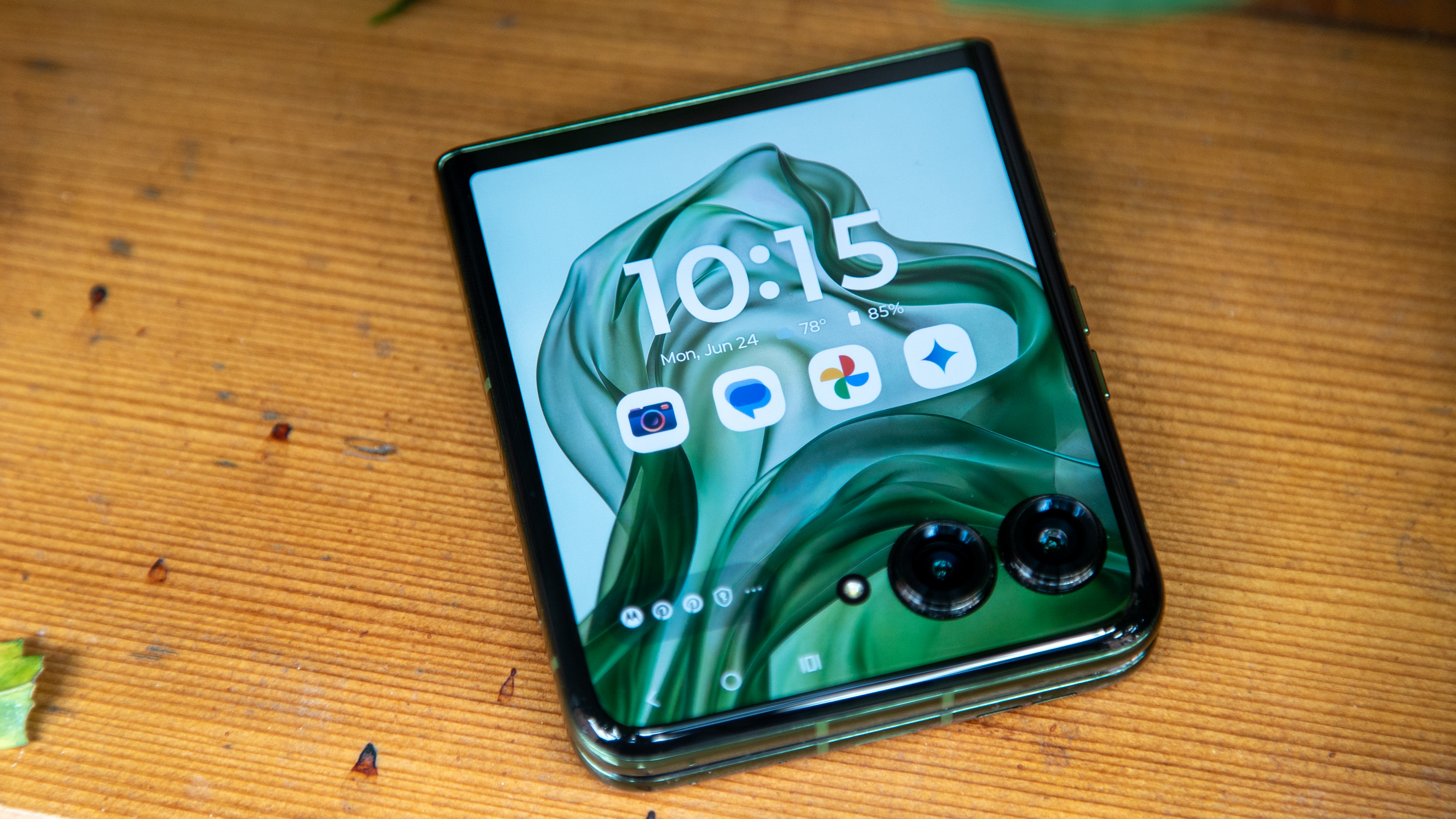
The cover screen was no doubt my favorite thing about the Razr Plus 2023 and the biggest reason why I chose it over the Galaxy Z Flip 5. So to keep things exciting, the company made it even bigger this year so that it spans pretty much the entire front of the phone when closed. That means there's so much more room for activities, and Motorola even revamped the cover screen experience so it's more fluid and really lets the various panels shine.
So far, it looks like a huge improvement over the rather dull-looking panels on the previous Razr Plus, although it does give me Galaxy Z Flip 5 vibes with the animations when swiping between panels or the fact that you can now pinch to zoom out and view all your panels at once. The actual panels have also been updated, so they're more useful, and Google Messages finally lets you take up the entire cover screen (a small pain point of mine from the Razr Plus 2023).
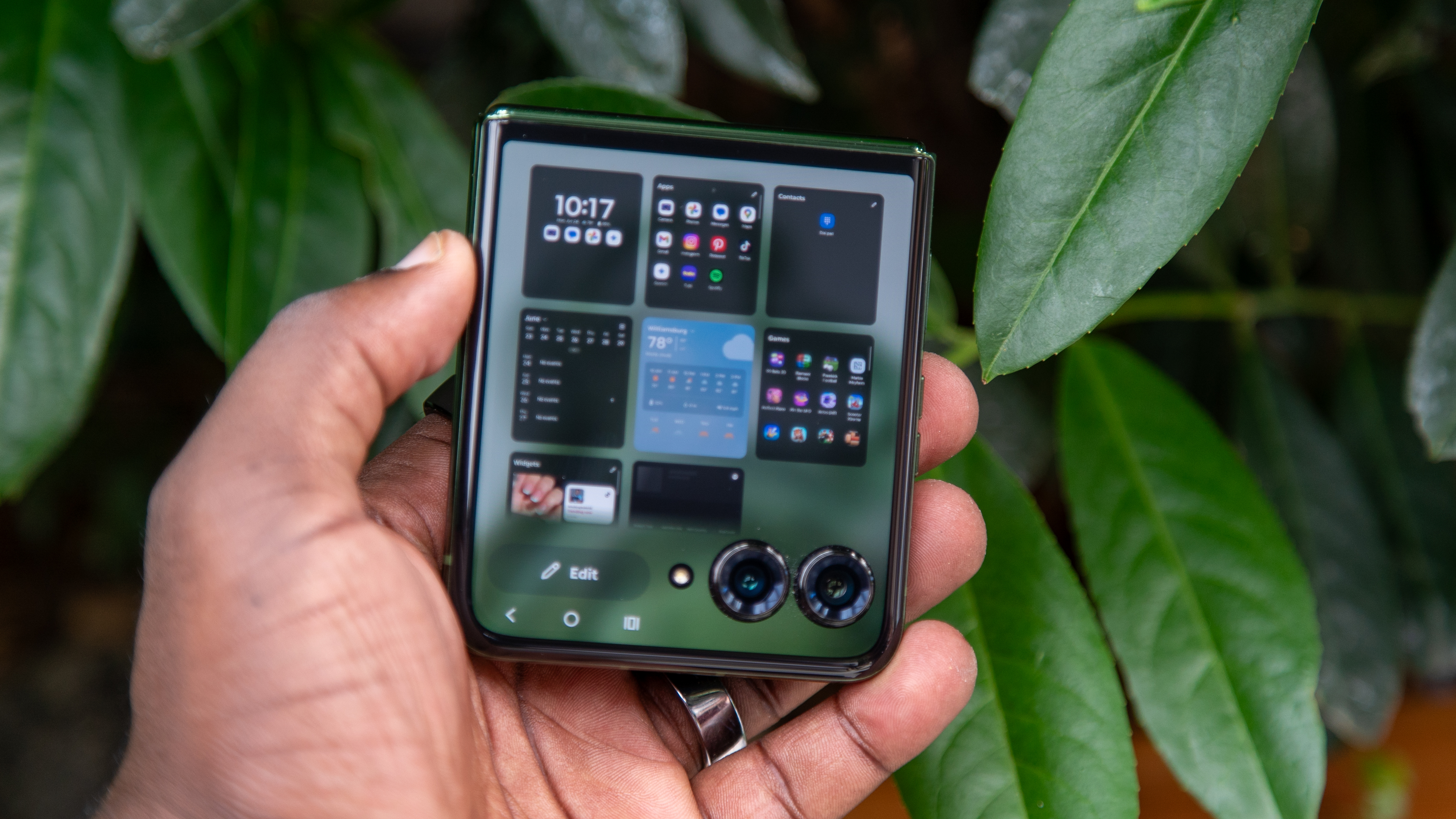
The display is also much brighter, at 2400 nits, which is perfect for me since I use the cover screen as much as (or maybe more than) the main display. It's also an LTPO panel with a refresh rate of 165Hz. It seems like overkill, which is exactly what I thought about last year's cover screen setup, but it's an LTPO panel this time around, so it should hopefully be easier on the battery, which has also been increased.
The Gemini app is on this phone, despite not yet being on last year's model, and not only will Gemini Nano power some features like Magic Compose in Google Messages, but you'll actually be able to use Gemini from the cover screen, which is actually pretty neat. Motorola talked about various AI features that you'll be able to access from anywhere on the phone with Moto AI, such as the ability to summarize notifications, transcribe conversations, and remember details to recall later. Basically, it's turning the Razr Plus 2024 into a Pixel of sorts.
These features will be available "in the coming months."

Lastly, it looks like Motorola has packed in plenty of new features to help you customize the cover screen, such as various sleep options (including always-on display), desk display modes, a customizable music player, and a Creator Toolkit to take advantage of different camera modes and features when using your favorite social media apps.
Motorola Razr Plus 2024: New cameras, who dis?
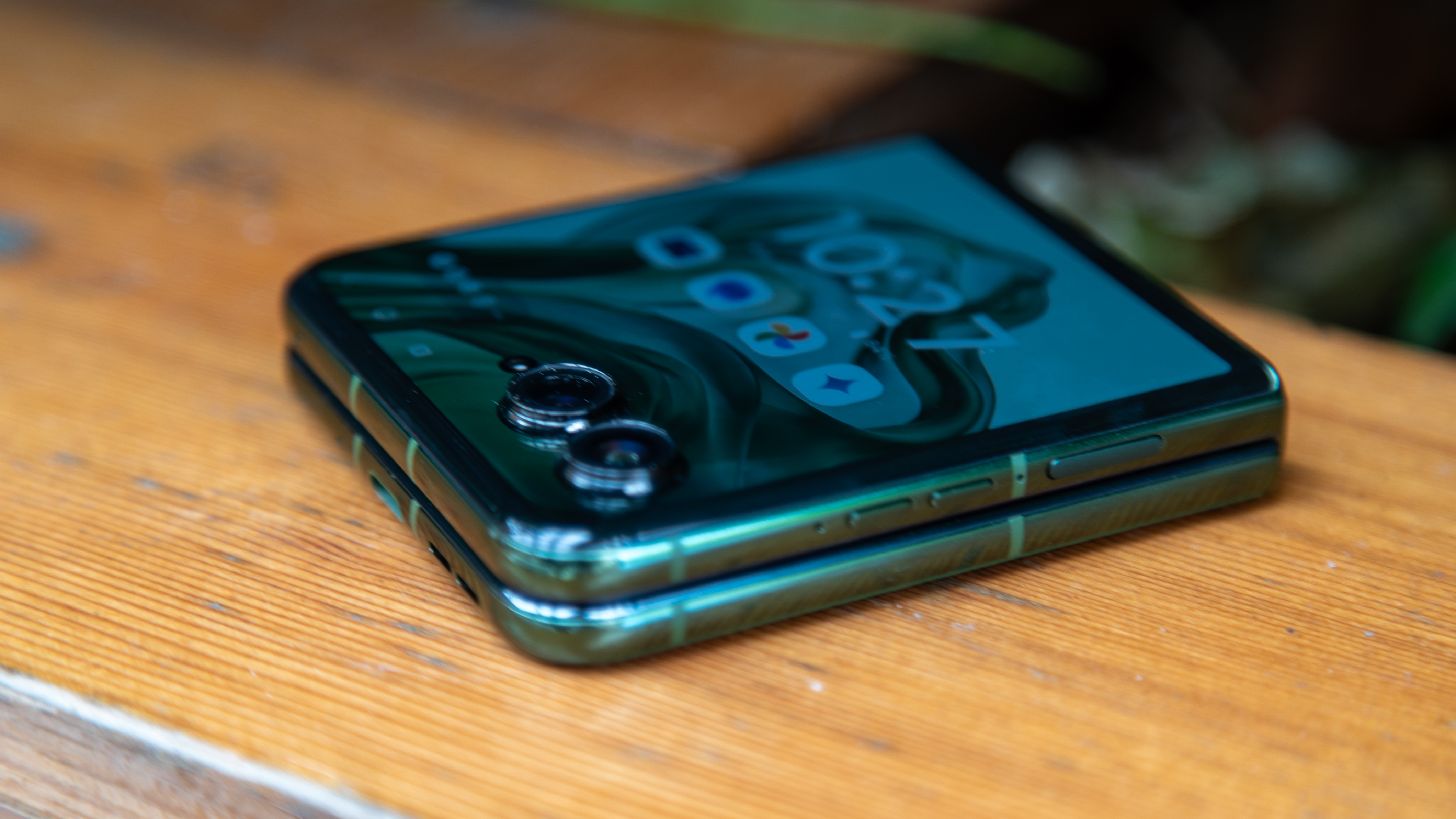
Motorola did a good thing and a weird thing this year for the Razr Plus 2024 camera system. To start with the good thing, we now have an improved 50MP primary sensor, which sounds like a big step up from the 12MP camera we got last year (and, at first glance, an actual improvement in quality). However, the weird thing is the switch from a secondary ultrawide camera to a 50MP 2x telephoto lens.
Yeah, I was scratching my head, too. However, I had the chance to sit down with Allison Yi, Motorola's executive director of Product Portfolio, and Angelina Gomez, the senior product marketing manager, to discuss the thought behind the move.
"It was a very big debate," Yi told me during the interview. "But from our perspective, it's all about the consumer. What do they want? What do they use? What is the most beneficial to them? When we looked at our data, it was very clear that people are using the Portrait Mode." Yi notes that the data shows users opting to use telephoto lenses up to 5x more than they use ultrawide cameras, which was surprising to hear.
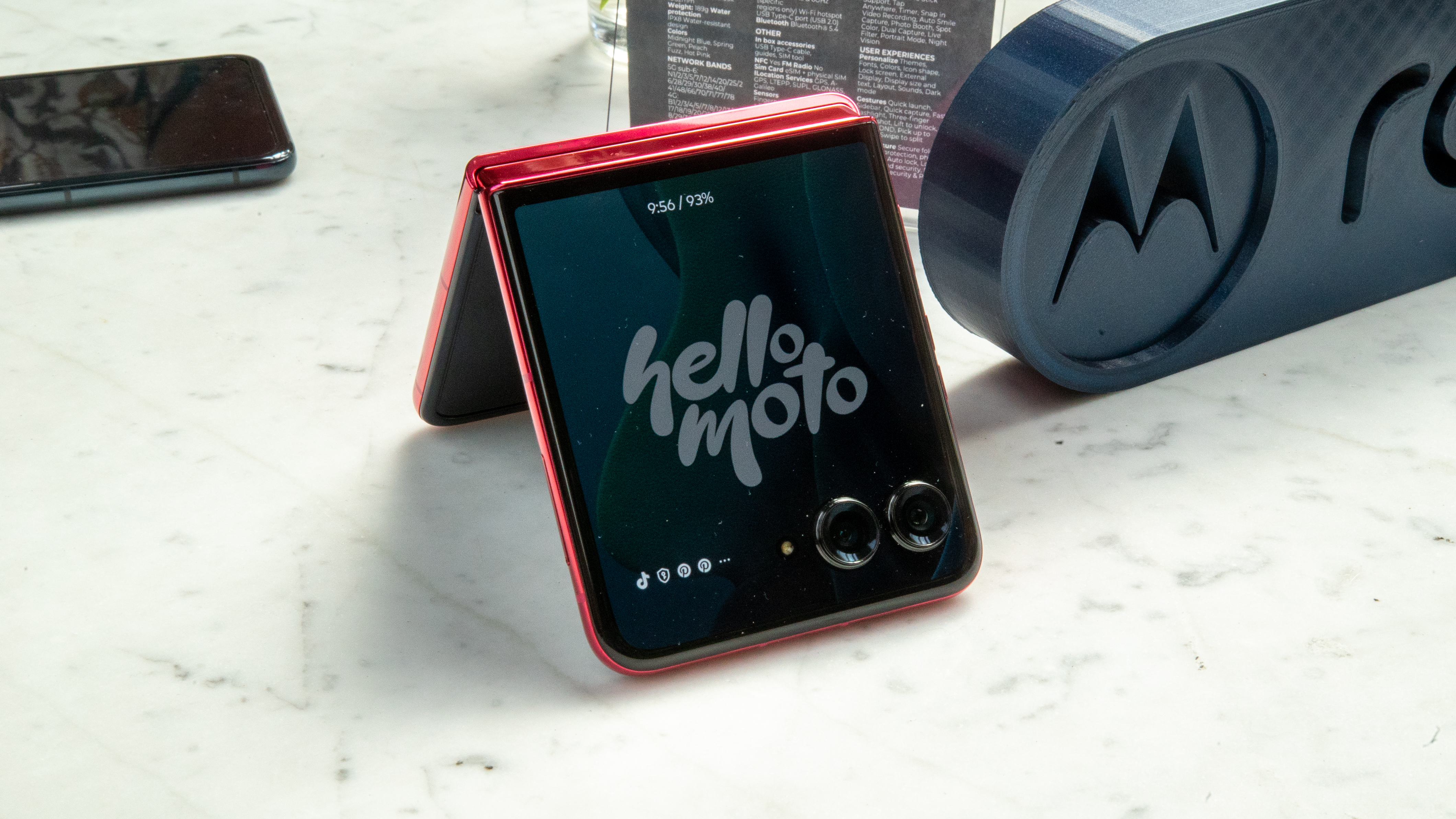
Most flip phones only come with two cameras, and rarely will you find a telephoto lens. Yi and Gomez weren't able to comment on whether or not there was a discussion to add a third rear lens to this phone or future Razr models, but I imagine it must have been in some part of the debate. That said, a third lens would likely get in the way of the cover screen experience.
However, it was clear that bringing a telephoto lens was all part of an elaborate scheme to turn us all into content creators by honing in on a camera experience that's focused on people. That's where features like Automatic Camcorder Mode come in, which automatically starts recording video when the phone is held up in a camcorder-like form. There are also other unique AI-powered features like Action Shot and Adaptive Stabilization, which are focused on capturing moments, especially fast-paced ones.
"You don't have to be an influencer to use this phone," said Gomez, who calls the Razr Plus 2024 her Swiss Army knife. "We want to make sure you have the right tools, and you don't have to be so technical to understand these things. We want to make sure they're extremely user-friendly."

But aside from all the fun AI-powered tricks, the regular camera experience should be much improved at a sensor level. Yi explained that the key aspect of the Razr Plus 2024 camera system is that it now does algorithm analysis on the raw data before it gets to the ISP, which should result in more light and details. This all sounds great, and given how last year's camera wasn't exactly my favorite, I'm excited to really test this out to see just how much things have improved.
Motorola Razr 2024: All grown up
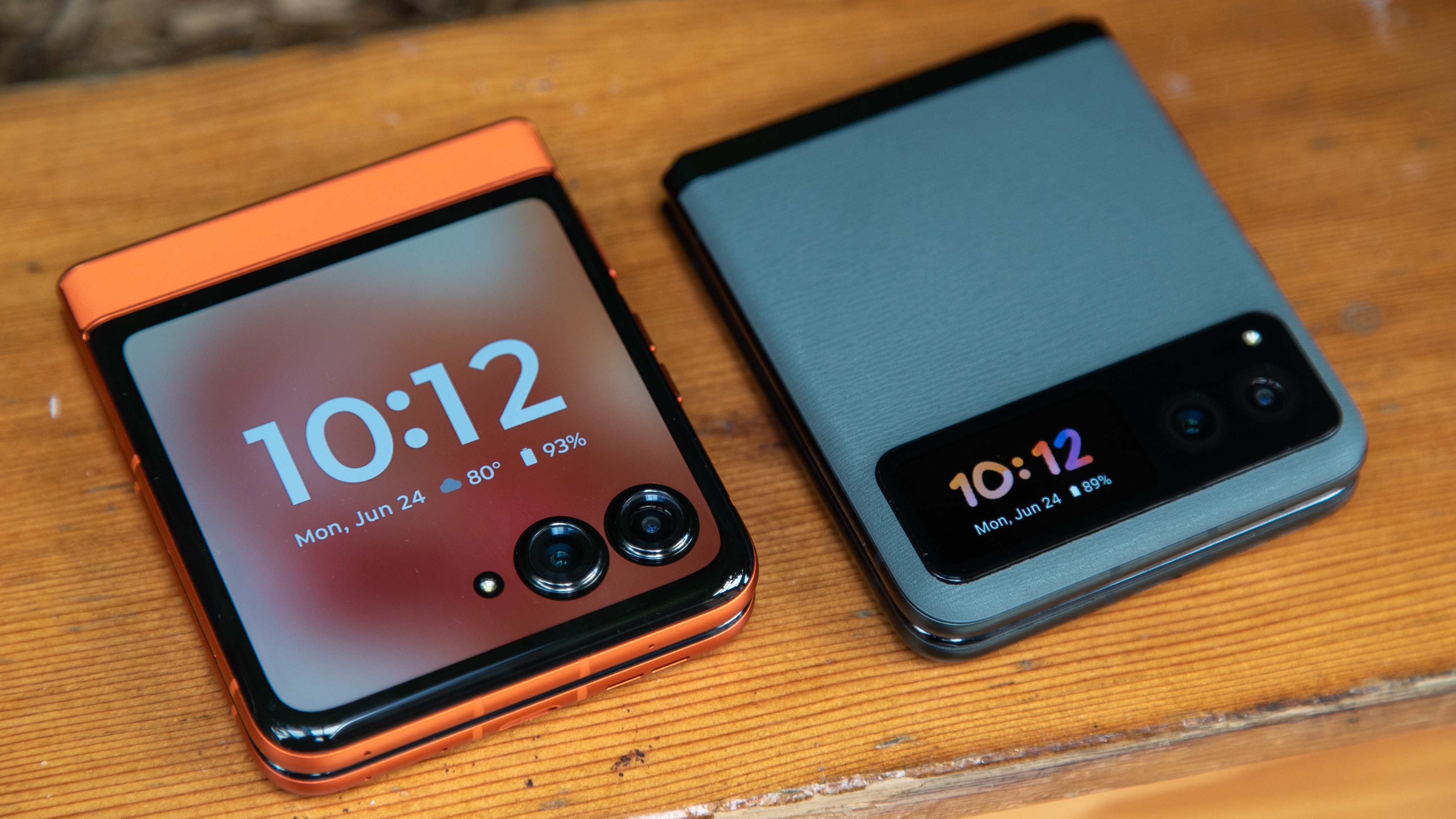
But of course, we can't forget about the Razr 2024, which I will lovingly call the "Razr Minus 2024." Gone is the relatively dull Razr 2023 design with the small cover screen. This year, Motorola is kicking things up with a "new" design borrowed from last year's Razr Plus 2023, although with even more vegan leather this time. There are three colors, including a bright Spritz Orange and a Koala Grey, the latter of which feels like straight-up suede (I didn't wanna take my hands off of it).
The borrowed design means you get the same 3.6-inch cover screen for apps but with brighter displays and toned-down refresh rates. The main display is 120Hz, which is perfectly fine at this price point, while the cover screen is 90Hz, which I would have loved on last year's Razr Plus (that was a 144Hz panel).

The phone is powered by one of the latest MediaTek chips, which is kind of a big deal since this phone's price point will likely mean it'll reach quite a few hands. It also gets the same 50MP main camera as the Plus, although with an ultrawide sensor, likely to keep costs down. Battery remains larger at 4,200mAh and charging speeds have improved.
| Category | Motorola Razr Plus 2024 | Motorola Razr 2024 |
|---|---|---|
| OS | Android 14 (Hello UX) | Android 14 (Hello UX) |
| Display (internal) | 6.9-inch, pOLED, FHD+ (2640 x 1080), 165Hz LTPO, 3000 nit peak, 22:9 | 6.9-inch, pOLED, FHD+ (2640 x 1080), 120Hz LTPO, 3000 nit peak, 22:9 |
| Display (external) | 4-inch, pOLED, 1272 x 1080, 165Hz, LTPO 2400 nit peak | 3.6-inch, OLED, 1056 x 1066, 90Hz, 1700 nits, 1:1 |
| Chipset | Snapdragon 8s Gen 3 | MediaTek 7300x |
| RAM | 12GB LPDDR5x | 8GB LPDDR4X |
| Storage | 256GB, UFS 4.0 | 256GB, UFS 2.2 |
| Rear Camera 1 | 50MP wide, f/1.7, 0.8μm (1.6μm w/ pixel binning), OIS | 50MP wide, f/1.7, 0.8μm (1.6μm w/ pixel binning), OIS |
| Rear Camera 2 | 50MP 2x telephoto, f/2.0, 0.64μm (1.28μm w/ pixel binning) | 13MP ultrawide/macro, f/2.2, 1.12μm, 120° |
| Selfie Camera | 32MP, f/2.4, 0.7 μm (1.4μm w/ pixel binning) | 32MP, f/2.4, 0.7 μm (1.4μm w/ pixel binning) |
| Audio | 3 mics, stereo speakers, Dolby Atmos, Spatial Sound, Snapdragon Sound 4 | 3 mics, stereo speakers, Dolby Atmos, Spetial Sound |
| Connectivity | 5G, Wi-Fi 7, Bluetooth 5.4, NFC | 5G, Wi-Fi 6E, Bluetooth 5.4, NFC |
| Security | Fingerprint sensor, Face unlock | Fingerprint sensor, Face unlock |
| Protection | IPX8, Gorilla Glass Victus | IPX8, Gorilla Glass Victus |
| Battery | 4000mAh, 45W wired charging, 15W wireless, 5W reverse-wireless | 4200mAh, 30W wired charging, 15W wireless |
| Dimensions (open) | 73.99 x 171.42 x 7.09mm | 73.99 x 171.30 x 7.25mm |
| Dimensions (closed) | 73.99 x 88.09x 15.32mm | 73.99 x 88.08 x 15.85mm |
| Weight | 189 | ~188g |
| Colors | Midnight Blue, Spring Green, Peach Fuzz, Hot Pink | Koala Grey, Beach Sand, Spritz Orange |
I won't talk much about software, but these phones run Motorola's new Hello UX based on Android 14 and will receive three OS upgrades and four years of software updates. Given that last year's Razr Plus has yet to receive Android 14, I'm really hoping Motorola will improve on that front, but I won't hold my breath. That said, we are expecting new Moto AI features to appear in the coming months, so I look forward to trying those out.
I loved the Motorola Razr Plus 2023 so much that I made it my daily driver for the past year. To say that Motorola is doing something really special with these phones is an understatement. The Razr Plus 2024 and Razr 2024 bring plenty of welcome hardware improvements while maintaining the same price point, which is important to note at a time when Samsung is rumored to increase the price of the Galaxy Z Flip 6, with no affordable model in sight for the immediate future. I can't wait to really put them to the test to see if Motorola really listened and improved on the weak points of last year's phones.
The Razr Plus 2024 and Razr 2024 will be available for preorder on July 10 and will go on sale on July 24, retailing for $999 and $699, respectively.

Derrek is the managing editor of Android Central, helping to guide the site's editorial content and direction to reach and resonate with readers, old and new, who are just as passionate about tech as we are. He's been obsessed with mobile technology since he was 12, when he discovered the Nokia N90, and his love of flip phones and new form factors continues to this day. As a fitness enthusiast, he has always been curious about the intersection of tech and fitness. When he's not working, he's probably working out.
You must confirm your public display name before commenting
Please logout and then login again, you will then be prompted to enter your display name.
